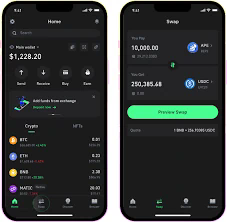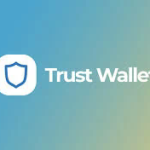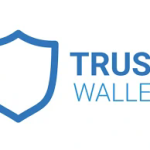An In-Depth Guide to Litecoin Wallets: Understanding Functionality, Types, and Security Strategies
### Introduction
Litecoin, created in 2011 by Charlie Lee, is one of Bitcoin’s earliest and most notable forks. It has garnered a reputation as a “silver to Bitcoin’s gold,” owing to its faster transaction times and lower fees. Integral to the interaction with Litecoin is the Litecoin wallet, a digital tool essential for the storage, receipt, and transfer of Litecoin (LTC) coins. This article delves deep into the realm of Litecoin wallets—examining their functionality, types, security features, and the technological underpinnings that make them a cornerstone for users in the cryptocurrency ecosystem.
### The Functionality of Litecoin Wallets
At its core, a Litecoin wallet serves several essential functions:
1. **Storage of Private and Public Keys**: Each wallet generates a pair of cryptographic keys: a private key, which is kept secret and used to sign transactions, and a public key, used to receive funds. The security of the wallet hinges on safeguarding the private key.
2. **Transaction Management**: Wallets facilitate the sending and receiving of Litecoin. Users initiate transactions by specifying the amount to send, the recipient’s address, and approving it with their private key.
3. **Balance Tracking**: Litecoin wallets display the balance associated with the user’s wallet address, enabling users to monitor their assets and transactions.
4. **Address Generation**: Each wallet can generate multiple receiving addresses, allowing users to manage funds and enhance privacy.
5. **Integration with Blockchain**: Wallets interact with the Litecoin blockchain, broadcasting transactions and ensuring they are confirmed on the network.
### Types of Litecoin Wallets
Litecoin wallets come in various forms, each catering to different user needs based on factors such as convenience, security, and usability. They can primarily be categorized into the following types:
#### 1. **Hardware Wallets**
Hardware wallets are physical devices designed specifically for storing cryptocurrencies securely. Examples include Ledger Nano S, Ledger Nano X, and Trezor models. They are considered the most secure option for storing LTC due to:
– **Cold Storage**: These wallets store private keys offline, making them immune to online hacking attempts.
– **User Authentication**: Transactions require manual confirmation via a button on the device, further enhancing security.
Hardware wallets are ideal for long-term investors who prioritize security and can afford to manage the additional complexity.
#### 2. **Software Wallets**
Software wallets are applications installed on devices (computers, smartphones) or web-based platforms. They come in several sub-categories:
– **Desktop Wallets**: Programs installed on personal computers (e.g., Litecoin Core, Electrum-LTC). These provide a high level of control and security, but they are susceptible to malware and hacking if the host system is compromised.
– **Mobile Wallets**: Apps for smartphones (e.g., Exodus, Trust Wallet), offering convenience for daily transactions and mobility. However, they often come with less security compared to hardware wallets and are vulnerable to the risks associated with mobile devices.
– **Web Wallets**: Services provided by online platforms (e.g., Binance, Coinbase) that simplify access to Litecoin but necessitate trusting a third party with users’ private keys. While user-friendly and accessible, they pose significant risks if the service is compromised.
#### 3. **Paper Wallets**
A paper wallet is a simple yet secure method of storing Litecoin. It involves generating private and public keys, printing them out, and storing the paper in a safe place. Key advantages include:
– **Offline Storage**: Because the keys are stored physically, they remain immune to hacking.
However, paper wallets can be lost, damaged, or destroyed, and they require careful handling to avoid theft or accidental loss.
#### 4. **Custodial vs. Non-Custodial Wallets**
– **Custodial Wallets**: These wallets hold users’ private keys and are managed by a third party (e.g., exchanges). While convenient, they present a risk since users are reliant on the security measures of the service provider.

– **Non-Custodial Wallets**: Here, users retain control of their private keys. This adds a layer of security and independence but requires users to be diligent about safeguarding their keys.
### Security Strategies for Litecoin Wallets
Given the increasing incidence of cyberattacks and theft in the cryptocurrency space, security is paramount. Here are effective strategies to enhance the security of Litecoin wallets:
1. **Enable Two-Factor Authentication (2FA)**: Where possible, activate 2FA on exchanges or web wallets to add an additional layer of security that requires a second form of verification.
2. **Regular Backups**: Frequent backups of wallet data ensure that funds can be recovered in case of hardware failure or accidental deletion.
3. **Secure Your Private Keys**: Never share private keys with anyone. Consider using encrypted storage solutions, and avoid storing them in plain text files.
4. **Keep Software Updated**: Regularly update your wallet software and devices to protect against vulnerabilities.
5. **Use Strong Passwords**: Create complex, unique passwords for wallet accounts, and consider using a password manager to keep track of them.
6. **Be Wary of Phishing Attacks**: Always verify the authenticity of websites before entering sensitive information. Familiarize yourself with potential scams and phishing tactics.
7. **Implement Multi-signature Wallets**: For businesses or larger holdings, multi-signature wallets require multiple keys to authorize a transaction, enhancing security against theft.
### Conclusion
Litecoin wallets play a pivotal role in the management and security of LTC assets, championing user autonomy and facilitating transactions in this growing digital economy. By understanding the various wallet types, their functionalities, and adopting robust security measures, users can better navigate the complexities of cryptocurrency storage and transfers. As the cryptocurrency landscape evolves, keeping abreast of advancements in wallet technology and security practices will be essential for safeguarding investments and ensuring a seamless experience in the world of Litecoin. By integrating security with usability, Litecoin wallets can serve as a reliable companion in the pursuit of digital financial independence.
### Future Trends in Litecoin Wallets
The landscape of cryptocurrency wallets, including Litecoin wallets, continues to evolve. As the cryptospace matures, several trends are emerging that could redefine how users manage their Litecoin holdings:
1. **Integration with DeFi**: As decentralized finance (DeFi) grows, wallets will likely incorporate functions that allow users to lend, borrow, and earn interest on their LTC holdings directly from their wallets without relying on centralized exchanges.
2. **Enhanced User Interfaces**: Improved user experience will be crucial for mass adoption. Expect more intuitive designs and functionalities that make it easier for newcomers while still catering to the experienced user.
3. **Cross-Chain Compatibility**: Future wallets might support not just Litecoin but multiple cryptocurrencies, allowing users to manage a diverse portfolio from a single interface.
4. **Privacy Features**: As users become increasingly concerned about their privacy, wallets incorporating advanced privacy features, such as built-in mixers or anonymity-focused functionalities, may become more popular.
5. **Use of AI and Machine Learning for Security**: Emerging technologies like AI may enhance security measures within wallets through behavioral analysis, automatically identifying suspicious activities and thwarting potential breaches.
### Final Thoughts
Navigating the world of Litecoin wallets requires a balance of security, usability, and personal responsibility. By taking proactive steps to understand the different types of wallets and their respective functionalities, and by adopting robust security measures, users can protect their assets and engage in the cryptocurrency ecosystem with confidence. The ongoing developments within the blockchain space promise to enhance wallet offerings, making them not only tools for storing value but also gateways into innovative financial opportunities. Whether a novice or a seasoned investor, staying informed about trends and security practices will ensure a resilient approach to managing Litecoin and achieving financial goals in the digital age.


